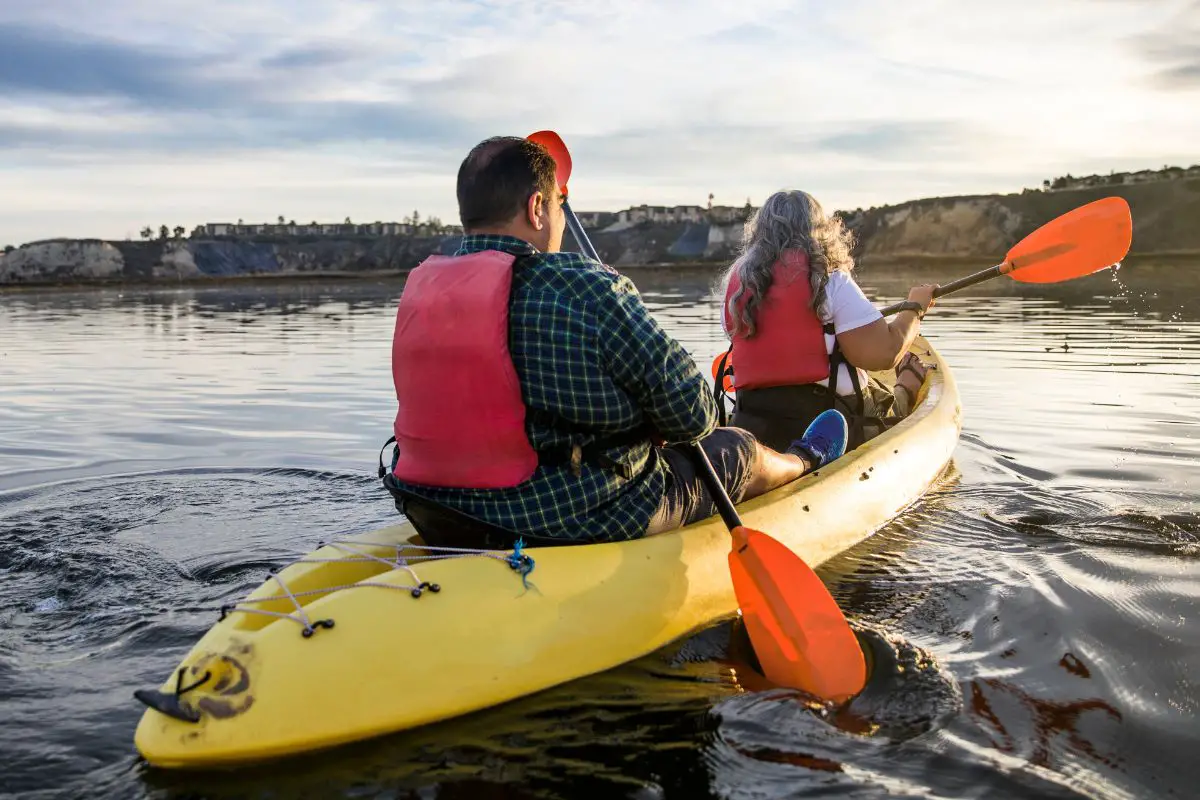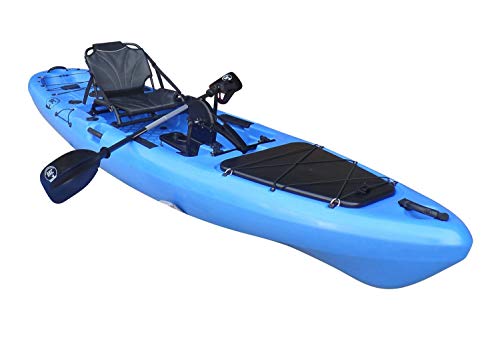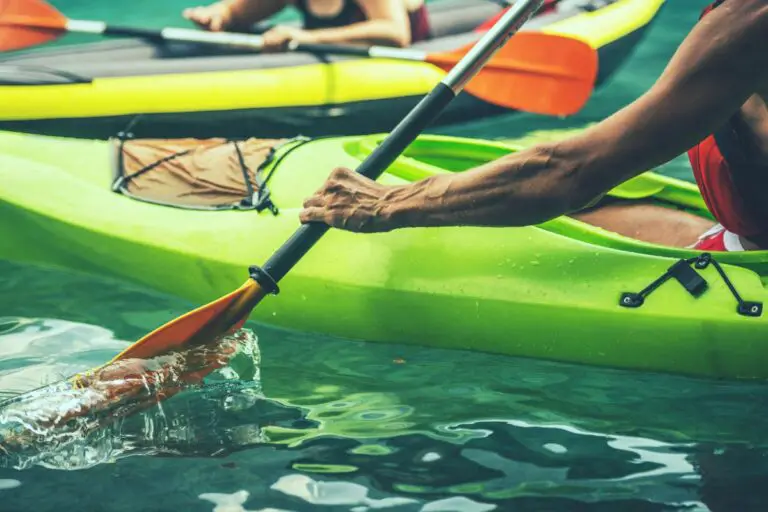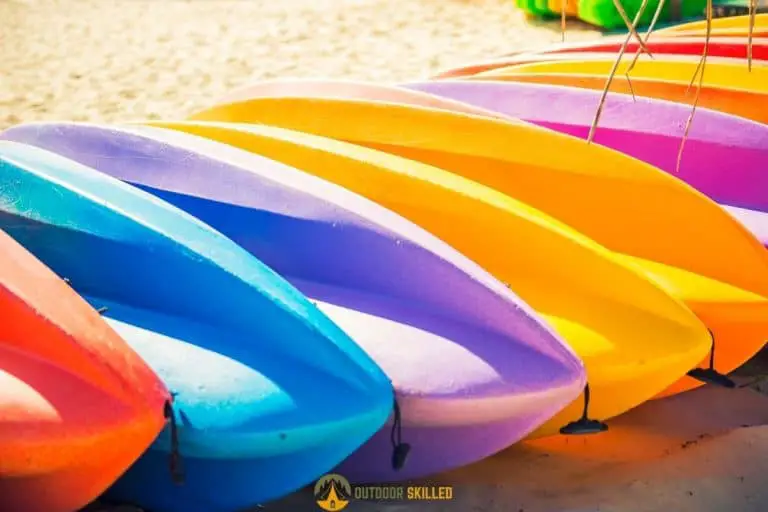Where Should The Heavier Person Sit In A Kayak?
When it comes to kayaking, the seating position can make a significant difference in the performance and stability of the kayak, especially for those on the heavier side.
It’s crucial to understand how to position oneself in the kayak correctly. So, where should the heavier person sit in a kayak for optimal stability and performance?
The heavier person should sit in the center of the kayak if it’s a solo kayak in order to distribute the weight evenly. Meanwhile, in a tandem kayak, the heavier person should sit in the rear as it’s closer to the kayak’s center of gravity, which will help maintain overall stability.
Keep reading to learn more about why the seating position matters when kayaking and how to maintain the kayak’s stability if you’re a heavy person.
Table of Contents
Why Does the Seating Location Matter When Kayaking?

Where you sit in a kayak matters significantly because it affects the kayak’s performance and stability and, in turn, your safety. For heavier individuals, seating location is particularly crucial because the higher weight can affect the kayak’s center of gravity.
A kayak’s center of gravity is critical to maintaining stability, particularly when dealing with waves or choppy waters. If you sit too far forward or backward, it can create an imbalance in weight distribution, which can cause the kayak to tip over.
Furthermore, seating location can affect the kayak’s speed and maneuverability. If you sit too far forward, the bow will submerge, creating more drag and reducing the boat’s speed. Conversely, sitting too far back can raise the stern and make the kayak difficult to steer.
Therefore, it is essential to position yourself correctly in the kayak to ensure optimal performance and stability.
Where Should The Heavier Person Sit In A Kayak?
The seating location for a heavier person in a solo kayak and a tandem kayak differs due to the boat’s structure and design. So, let’s take a closer look at where the heavier person should sit in each type of kayak:
Solo Kayak
In a solo kayak, the heavier person should sit in the center of the kayak to distribute their weight evenly, which is crucial for maintaining stability and preventing the kayak from tipping over.
If the kayak has adjustable foot braces, the heavier person should adjust them to accommodate their longer legs, ensuring their weight is evenly distributed in the kayak.
Additionally, they should adjust the backrest and hip pads to fit their body shape, providing more comfort and support while paddling.
Tandem Kayak
In a tandem kayak, the heavier person should sit in the rear seat while the lighter person sits in the front seat.
This positioning helps to improve the boat’s balance and steering as the heavier person can use their weight to steer the kayak using their paddle as a rudder, while the lighter person provides the power to paddle.
Can a Heavy Person Paddle a Tandem Kayak Alone?
A heavy person can paddle a tandem kayak alone, but it’s not always the most practical or efficient option.
Tandem kayaks are designed to be paddled by two people, and the weight distribution is optimized for this configuration.
Paddling a tandem kayak alone as a heavier person can result in an uneven weight distribution, making the kayak more difficult to control.
However, some tandem kayaks can be converted into solo kayaks as they are designed with removable seats. The heavier person can adjust the seating position and weight distribution in these cases.
It’s important to note that paddling a tandem kayak alone can be challenging, especially for inexperienced kayakers. If paddling alone is the only option, taking the necessary precautions and adjusting weight distribution to make it more manageable is crucial.
Tips for Kayaking If You’re a Heavy Person
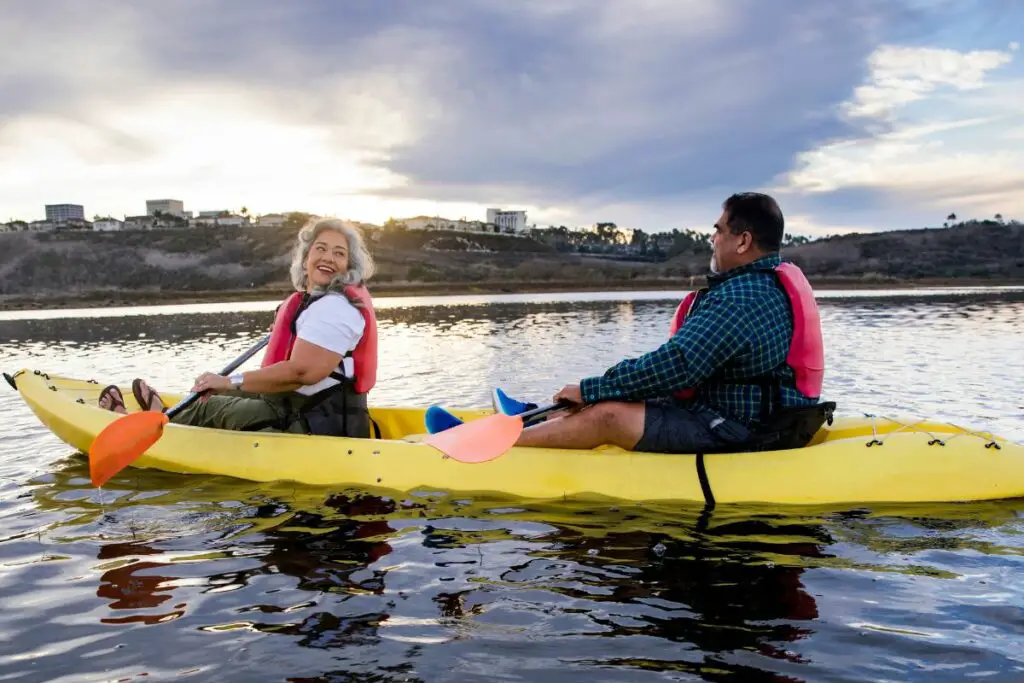
As explained in my guide to how anyone can go kayaking, overweight people can go kayaking just fine, but it’s important to take some considerations to ensure safety and comfort.
Here are some tips on how to kayak if you’re a heavy person:
- Choose the right kayak: It’s important to select a kayak that can accommodate your weight and body size.
- Look for kayaks with a higher weight capacity, wider cockpit, and more substantial support, such as this Brooklyn Kayak Company PK13 sit-on-top kayak.
- Sit-on-top kayaks, in general, are good for heavier individuals as they offer more stability; you can check out more of my recommendations for sit-on-top kayaks here.
- Check the kayak’s weight capacity: Before purchasing or renting a kayak, check the weight capacity to ensure that it can accommodate your weight and any gear you may be carrying.
- Invest in a comfortable seat: Consider investing in an aftermarket seat if the kayak’s standard seat is uncomfortable.
- Look for a kayak seat that provides ample cushioning and support, especially for your lower back. You can check out this guide on the best kayak seats for recommendations.
- Wear the right gear: Make sure to wear a personal flotation device that fits comfortably and is the correct size. It’s also essential to wear appropriate clothing that is comfortable and allows for ease of movement.
- Paddle correctly: Make sure to keep your arms straight and use your core muscles to paddle rather than just your arms. Using a wider paddle with a larger blade is also recommended for more power and control.
- Practice safety techniques: Learn and practice safety techniques such as how to self-rescue, how to re-enter the kayak, and how to navigate choppy waters.
- Build up your stamina gradually: Kayaking can be physically demanding, so it’s important to start with shorter trips and gradually increase the duration and intensity of your kayaking adventures.
- It’s also important to take breaks as needed and to bring along plenty of water and snacks to stay hydrated and fueled.
By following these tips, you can enjoy the benefits of kayaking while minimizing the risk of injury or discomfort.
Choose the right Kayaks
As explained earlier, having the right kayak can make a significant difference, and while there are plenty of options to choose from, I can only recommend those that I’ve tested and tried myself:
My top pick is this Brooklyn Kayak Company PK13 sit-on-top kayak. It’s an excellent choice for overweight individuals looking for a stable and comfortable kayak.
With a weight capacity of up to 550 pounds, it can easily accommodate larger paddlers. Additionally, the adjustable footrests and padded seat provide added comfort for extended paddling sessions.
Or alternatively:
The BOTE Zeppelin Aero Inflatable Kayak is another ideal choice for overweight individuals, especially those on a tighter budget.
The inflatable design makes it easy to transport and store, and the durable material can handle weights up to 500 pounds. The wide design also provides added stability and reduces the risk of capsizing.
Conclusion
Kayaking can present some challenges if you’re on the heavier side, but by positioning yourself properly in the kayak and taking safety measures you can fully enjoy the benefits of kayaking, including exercise, relaxation, and exploring the outdoors.
Kayak your way to Freedom
- On a budget? Check out the best fishing kayaks under $500 here and the best Fishing Kayaks under $1,000 here. Or Check the best Cheap Kayaks here.
- Going fishing? Here are the best Ocean fishing kayaks, and here are the best River Fishing Kayaks.
- You can also find the best Fly Fishing Kayaks here and the best Bass Fishing Boats here.
- A bit experienced? Check out the best modular kayaks here and the best tandem fishing kayaks here.
- Looking for something special? Check out my favorite Ducky kayaks here.
- Navigate your way with these awesome and beginner-friendly Kayak compasses.
- Going Hunting? These Duck hunting kayaks will give you an unfair advantage!
- Have a need for speed? These motorized kayaks will get you moving.
- Protect yourself from the sun with these Kayak shades, and make your kayak more comfortable with these Kayak seats.
- Keep your feet dry and warm with these superb Kayaking shoes.
- Going Kayaking in cold water? Stay warm with these Kayaking gloves.
- Paddle Less, Fish More with the Best Kayak Motors
- Looking to get a trolling motor on your kayak? Check out the best kayak trolling motor mounts here.
If you like this article, please share it or pin it, you can find the share buttons below. We will really appreciate it ❤️

